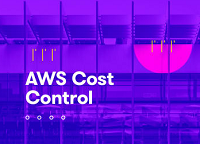Over the past couple of years, I’ve have had a lot of conversations with large and small enterprises regarding cloud management and cloud optimization tools. Of course, all of these organizations were looking for cost control. They wanted to reduce their bills, just like with any utility you might run at home. Amazon Web Services (AWS) actively promotes optimizing cloud infrastructure, and where they lead, others follow. AWS even goes so far as to suggest the following simple steps to control AWS costs:
- Right-size your services to meet capacity needs at the lowest cost;
- Save money when you reserve;
- Use the spot market;
- Monitor and track service usage;
- Use Cost Explorer to optimize savings; and
- Turn off idle instances (we added this one).
So where is all of this headed? It’s great that AWS offers their own solutions but what if you want automation into your DevOps processes, multi-cloud support (or plan to be multi cloud), real-time reporting on these savings, and to turn stuff off when you are not using it? Well then you likely need to use a third-party tool to help with these tasks.
Let’s take a quick look at a description of each AWS recommendation above, and get a better understanding of each offering. Following this we will then explore if these cost optimization options can be automated as part of a continuous cost control process:
- Right-sizing – Both the EC2 Right Sizing solution and AWS Trusted Advisor analyze utilization of EC2 instances running during the prior two weeks. The EC2 Right Sizing solution analyzes all instances with a max CPU utilization less than 50% and determines a more cost-effective instance type for that workload, if available.
- Reserved Instances (RI) – For certain services like Amazon EC2 and Amazon RDS, you can invest in reserved capacity. With RI’s, you can save up to 75% over equivalent ‘on-demand’ capacity. RI’s are available in three options – (1) All up-front, (2) Partial up-front or (3) No upfront payments.
- Spot – Amazon EC2 Spot instances allow you to bid on spare Amazon EC2 computing capacity. Since Spot instances are often available at a discount compared to On-Demand pricing, you can significantly reduce the cost of running your applications, grow your application’s compute capacity and throughput for the same budget, and enable new types of cloud computing applications.
- Monitor and Track Usage – You can use Amazon CloudWatch to collect and track metrics, monitor log files, set alarms, and automatically react to changes in your AWS resources. You can also use Amazon CloudWatch to gain system-wide visibility into resource utilization, application performance, and operational health.
- Cost Explorer – AWS Cost Explorer gives you the ability to analyze your costs and usage. Using a set of default reports, you can quickly get started with identifying your underlying cost drivers and usage trends. From there, you can slice and dice your data along numerous dimensions to dive deeper into your costs.
- Turn off Idle Instances – To “park” your cloud resources by assigning them schedules of operating hours they will run or be temporarily stopped – i.e. parked. Most non-production resources (dev, test, staging, and QA) can be parked at nights and on weekends, when they are not being used. On the flip side of this, some batch processing or load testing type applications can only run during non-business hours, so they can be shut down during the day.
Many of these AWS solutions offer recommendations, but do require manual efforts to gain the benefits. This is why third-party solutions have seen widespread adoption and include cloud management, cloud governance and visibility, and cloud optimization tools.
About the Author
 Jay Chapel is CEO of ParkMyCloud. Worked at IBM, Micromuse. Strong sales and sales operations background. WVU MBA.
Jay Chapel is CEO of ParkMyCloud. Worked at IBM, Micromuse. Strong sales and sales operations background. WVU MBA.
Sign up for the free insideBIGDATA newsletter.





Speak Your Mind